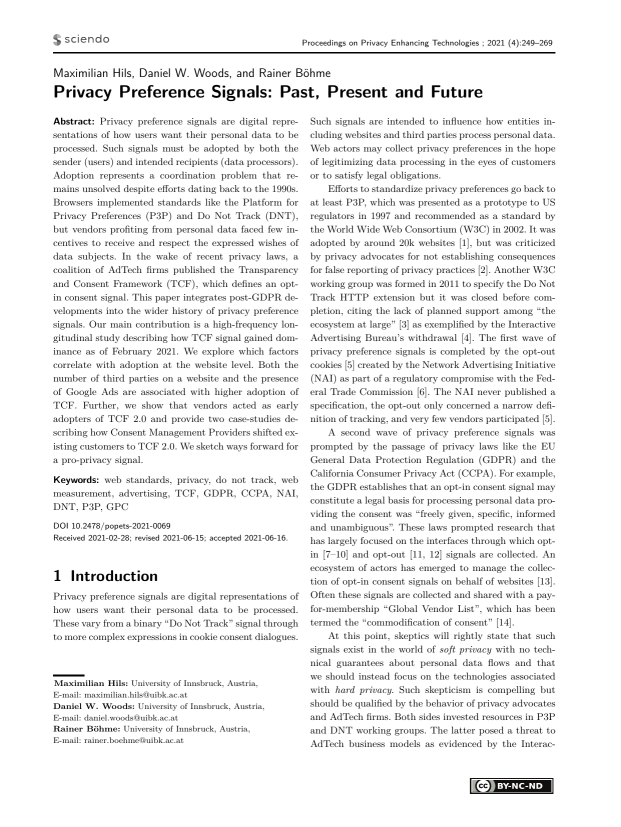Privacy Preference Signals: Past, Present and Future
Authors: Maximilian Hils (University of Innsbruck, Austria), Daniel W. Woods (University of Innsbruck, Austria), Rainer Böhme (University of Innsbruck, Austria)
Volume: 2021
Issue: 4
Pages: 249–269
DOI: https://doi.org/10.2478/popets-2021-0069
Abstract: Privacy preference signals are digital representations of how users want their personal data to be processed. Such signals must be adopted by both the sender (users) and intended recipients (data processors). Adoption represents a coordination problem that remains unsolved despite efforts dating back to the 1990s. Browsers implemented standards like the Platform for Privacy Preferences (P3P) and Do Not Track (DNT), but vendors profiting from personal data faced few incentives to receive and respect the expressed wishes of data subjects. In the wake of recent privacy laws, a coalition of AdTech firms published the Transparency and Consent Framework (TCF), which defines an optin consent signal. This paper integrates post-GDPR developments into the wider history of privacy preference signals. Our main contribution is a high-frequency longitudinal study describing how TCF signal gained dominance as of February 2021. We explore which factors correlate with adoption at the website level. Both the number of third parties on a website and the presence of Google Ads are associated with higher adoption of TCF. Further, we show that vendors acted as early adopters of TCF 2.0 and provide two case-studies describing how Consent Management Providers shifted existing customers to TCF 2.0. We sketch ways forward for a pro-privacy signal.
Keywords: web standards, privacy, do not track, web measurement, advertising, TCF, GDPR, CCPA, NAI, DNT, P3P, GPC
Copyright in PoPETs articles are held by their authors. This article is published under a Creative Commons Attribution-NonCommercial-NoDerivs 3.0 license.


